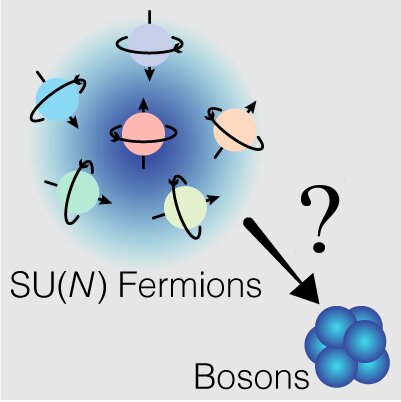
Researchers at the Hong Kong University of Science and Technology (HKUST) and the Purdue university use quantum simulation to explore a bosonization phenomenon with ultracold fermions in three dimensions.
Bosons and fermions, two types of elementary particles that build the universe, behave in a drastically different way. For example, bosons can share the same quantum state while fermions of the same kind cannot but fill available quantum states one by one.
Modern developments in condensed matter physics and high energy physics have suggested that the boundary between bosons and fermions can be blurred. One of such examples is a gas of multi-flavor fermions, each identified by a different spin, in which any two flavors interact with one another by the same interaction. Multi-flavor fermions with such a SU(N) symmetry are expected to behave like an ensemble of spinless bosons when the number of different spins in the system becomes very large.
Bosonization has been explored, theoretically and experimentally, in one-dimensional systems. But it is unclear if bosonization occurs in higher dimensional systems, largely because exact solutions to the interacting many-body system are unknown.
Here, the researchers show, for the first time, that it does occur in three-dimensional systems by measuring two-body contacts, the central quantity governing all thermodynamic quantities of dilute quantum gases ranging from the energy to the pressure. Evidence of bosonization in contacts thus demonstrates that all other thermodynamic quantities also approach those of bosons. (Phys.org)
The paper has been published in Physical Review X.
